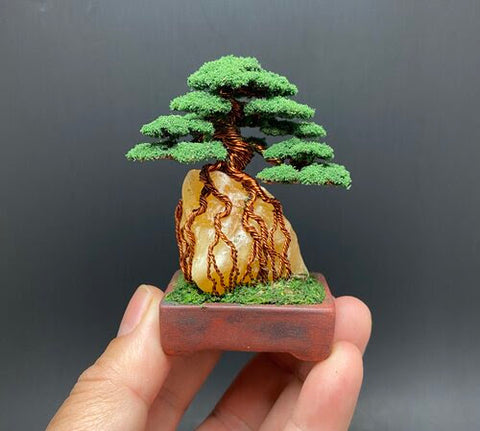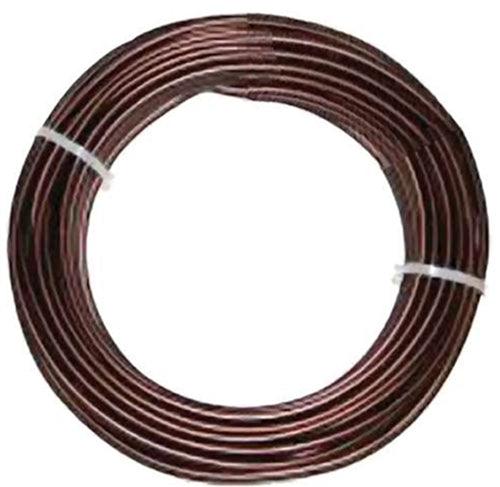Visited By The Bonsai Muse: Harry Harrington
Time for our old friend Harry Harrington. Still one of the most distinctive and industrious bonsai artists we know. I'd like to call him a genius because of just how unique and seemingly uncontrived so many of his bonsai are, but I think he might take offense.

Can you see this...

... when you look at this?

Or how about this? All the same tree reimagined and styled by Harry Harrington. I think maybe Harry has been visited by the great Bonsai Muse.
Here's what Harry wrote about it. "Sometimes I’m forced to make room in my personal collection. It’s just not possible to keep everything when I have so many other trees coming through at a reasonable quality.
This is an English Elm bonsai I collected in 2004 (see image from 2005), that has brought a lot of pleasure but will soon be on its way to another garden.
I have heaps of progression and instructive images of the tree from over the years and will be in a book/magazine at some point in the future!"
Have you gotten your copy of Harry Harrington's Foundations of Bonsai yet? It is a must-have for bonsai beginners and long-time practitioners alike. Harry Harrington is a unique force in our world bonsai community. What he accomplishes with inexpensive, undeveloped and sometimes unattractive material is nothing short of impressive. We can all benefit from Harry evolution as a bonsai grower and artist of considerable dedication and skill.
You can get your copy here.
Sources:
Harry Harrington on FB
Harry's Bonsai4me website
Harry on BBC
Harry on Bonsai Bark
Wonderful Bonsai by Andres Alvarez Iglesias
We've got some super trees in perfect settings by Andres Alvarez Iglesias. The photographs are courtesy of Santi Lorenzo Borda, and according to Andres, "They are wonderful as always."

No IDs are provided for the trees, so you'll have to enjoy them nameless.

Here's that little companion piece in the photo above.

Another of Andres' trees. Everything about it suggests Ginkgo.

Muscular! We could guess, but we won't. Can't quite make out the little complimentary piece....

... but this might help.

Here's Andres' caption with this one, There are trees that are engraved in our retina once contemplated. This is definitely one of them.. let's walk together, reinventing ourselves and reinventing ourselves.
Gallery Sources:
Andres Alvarez Iglesias on FB
Andres on Bonsai Bark
The Best Bonsai How-To Book We've Seen in a Long Time
We've got a treat for you today: a few trees by Dave De Groot and a few teaser pages from Dave's Principles of Bonsai Design (still the best how-to bonsai book we've seen in a long time).

This colorful Japanese winterberry belongs to David De Groot. Here's his caption, My little JAPANESE WINTERBERRY (Ilex serrata) is still very much in development but is showing some Holiday Cheer.

Here's Dave's caption with this one, My Mugo Pine is getting into the act with a "Three Friends of Winter" display of the Mugo with a small Ume in a Bamboo container.

Dave decides to promote his most excellent book. Speaking of the holidays, if you still haven't gotten a gift for that special bonsai someone, there is still time to order my book "Principles of Bonsai Design" from Stone Lantern. Covering not only design, but container selection, display and evaluation, it's a book they will refer to again and again.
I'll second that!

In Dave De Groot's own words, I just finished the WINTER WIRING of my "Windblown" Chinese elm. I have shown this a couple times before, but the reason I'm showing it today is that after several years of training, I did not have to move any large branches, and as a result can show it with no large wire. I used only a few pieces of 2 mm, and the rest was all 1-1/2mm and 1mm. Parts of some branches could simply be trimmed, with no added wire. This is a good time to wire as the winter buds are tight and undamaged by handling small branches in congested spaces.
This one and the next two are pages from David De Groot's Principles of Bonsai Design.
We'll let the images do the talking.

Dave De Groot (in the vest) with Mauro Stemberger, who visited Dave recently. You might imagine Dave and Mauro worked that elegant Juniper together.
Gallery Sources:David De Groot on FB
David on Bonsai Bark
2023 Taikan-ten Bonsai Exposition
We've got some great shots from the 2023 Taikan-ten Bonsai Exposition that I'm sure you'll like. I found them on Peter Tea's FB page.
Peter Tea presented so many phenomenal shots from the 2023 Taikan-ten Expo, that it's hard to know where to start. I guess this juniper will do...

... or maybe we should have started with this Japanese black pine?

And then there's always this abundantly fruited little Princess persimmon.

Another Juniper from Peter Tea's Taikan-ten photos.

And one more black pine. This one looks like it might be cork bark.
Gallery Sources:
Peter Tea Bonsai on FB
Peter Tea on Bonsai Bark
Japanese Red Pine Bonsai - 2019 Kokufu Exposition
We've got a handful of muscular Japanese Red pines from the 93rd Kokufu Exposition for you today. They're not as popular as Japanese black or white pines, but maybe they should be.

Akamatsu, aka Japanese red pine (Pinus densiflora). This one and the others shown here are from the 2019 Kofuku Exhibition.

Coiled muscle.

Muscle and movement accentuated by the lines in the bark.

Battle scars and a strong rugged base lend a feeling of age.
Gallery Sources:
Our Top Two Recommendations for Must-Read Bonsai Books
First, if you don't have a copy of David De Groot's Principles of Bonsai Design, it's time. And if you know a bonsai lover that doesn't doesn't have their copy, soon it will be December: time to express your unbounded generosity.
The second book we recommend for bonsai enthusiasts is Michael Hagedorn's Bonsai Heresy, a deep dive into the art and science of bonsai. Scroll down for more from Dave De Groot and Michael Hagedorn.

David De Groot's now famous Redwood bonsai bridge. David is one of North America's most respected bonsai teachers and the author of Principles of Bonsai Design. He was also the curator of the Pacific Bonsai Museum for 25 years (Weyerhaeuser Pacific Rim Bonsai Collection at the time).
Principles of Bonsai Design by David De Groot
 Dave De Groot's Masterpiece is back. And it's better than ever. New content and superior new layout & design makes the best English language how-to book on Bonsai Design even better. If you really want to learn bonsai, all the way from basics to advanced design principles and techniques, this is the book for you.
Dave De Groot's Masterpiece is back. And it's better than ever. New content and superior new layout & design makes the best English language how-to book on Bonsai Design even better. If you really want to learn bonsai, all the way from basics to advanced design principles and techniques, this is the book for you.

A piece of Dave De Groot's meticulously well organized, clean and all around impressive bonsai collection.

A young and happy Dave De Groot with the great John Naka 'The Dean of American Bonsai.' Circa 1974.
Michael Hagedorn is the author of Bonsai Heresy, a must-read for any and all bonsai lovers.
Here is Michael's impressively unique Vine maple tower. In addition to a wide range of traditional bonsai skills and knowledge, Michael's fearlessness and humor when it comes to breaching established bonsai conventions is evident.

Bonsai Heresy by Michael Hagedorn
This photo was posted in a review of Bonsai Heresy by Brown C. that reads as follows:
" Bonsai Heresy, by Michael Hagedorn, is an articulate, balanced, researched, captivating — and sometimes witty — discussion of bonsai topics covering everything from techniques, to supplies, to aesthetics. So thoughtful and well written, I couldn't put it down. It's a serious book, more than 300 pages, substantive for the longtime practitioner as well as accessible to the bonsai beginner. Personally, I agree with Michael's assessment and conclusions regarding — well, everything. I'm sure that I'll be going back to reread portions as various situations arise. I highly and enthusiastically recommend the book!!!"
For more on Dave de Groot, check out his New Zealand Bonsai Demo.

For more on Michael Hagedorn, check out this collection of his bonsai.
Gallery Sources:
David De Groot on FB
David De Groot on Bonsai Bark
Michael Hagedorn Crataegus Bonsai
Michael Hagedorn on Bonsai Bark
Bonsai By Wire: Bonsai Wire Sculptures by Ken To
Today we have some wire sculpted bonsai by our old friend Ken To, someone we featured way back in our distant past. Welcome back Ken. I hope you have time to enjoy his remarkable handiwork.

The fingers give away just how tiny and intricate this Rock-over-rock wire sculpted bonsai is. The artist Ken To, someone we featured several times way back in the pre-pre-covid era.

It's impressive how much scenery Ken can fit into such a small space.




Gone fishing.


Must be a juniper with all that deadwood.
Gallery Sources:
Art by Ken To
nanobonsai
Ken To on Bonsai Bark
How to Grow Bonsai from Scratch: A Bonsai Course
One of the most satisfying experiences in our bonsai journey is developing bonsai from scratch. It takes more time and perhaps a little more attention to detail, but bonsai is about time and attention to detail anyway, so why not take the leap and reward yourself with a course by two highly accomplished bonsai artists.
Developing Bonsai from Seed is offered by Bonsai Empire and it's not just about seeds, but includes other time tested ways to start bonsai from scratch. Scroll down, take a look, give it some thought and then sign up (you can watch it whenever you want as many times as you want). You'll be happy you did.

Michael Hagedorn, bonsai artist teacher, author of Bonsai Heresy and Post-Dated, and the perhaps the person who has had the most profound influence on my bonsai journey...

... and Bjorn Bjorholm who just might be the most recognized North American bonsai artist and teacher (and for good reason). BTW, both Michael and Bjorn apprenticed in Japan.

Another shot of Michael from Bonsai Empire's Developing Bonsai from Seed course.

And Bjorn again.
Here's your link to Bonsai Empire's Developing Bonsai From Seed course.
Speaking of Bonsai Empire's Courses
and Michael Hagedorn: Bonsai Empire's Kimura Masterclass, Reviewed by Michael Hagedorn
Sources:
Bonsai Outside the Lines: Bonsai by 鳳鳴盆栽
Today we've got some trees that you might call Eccentric. Or at least out of the mainstream. They are all by 鳳鳴盆栽, an artist with some interesting twists and turns.

Here's a representative sample of bonsai by 鳳鳴盆栽. Or, at least some of his bonsai.

None of the trees are ID'd, but as you can see, there is a preference for junipers.

Loop to loop.

Same tree. New apex.

Maybe not eccentric, but a little unusual.

Ditto.



A lot of his tree's are rangy like this, but this one strikes me as particularly well done.


Loopy Crape myrtle.

One of my favorites. Not as unconventional as some, but still pretty wild.

Aha. 鳳鳴盆栽's perfect nod to tradition.
Gallery Sources:
Knockout NorCal Bonsai from Redwood Empire Bonsai Society
Today's bonsai photos (below) were taken by Jonas Dupuich at the Redwood Empire Bonsai Society’s 37th annual show in Rohnert Park, Sonoma County, California. For Jonas' observations on the show, visit his Bonsai Tonight blog.

Japanese maple, photo by Jonas Dupuich (all of today's bonsai photos are by Jonas).

Olive.
Scroll down for more photos from the Redwood Empire Bonsai Society's 37th annual show.

Grafted juniper. Photo by Jonas Dupuich.

Chinese elm.

Satsuki azalea 'Akanagi' from the recent Redwood Empire Bonsai show.

Olive.
Gallery Sources:
Bonsai Tonight blog
2023 8th U.S. National Bonsai Exhibition








